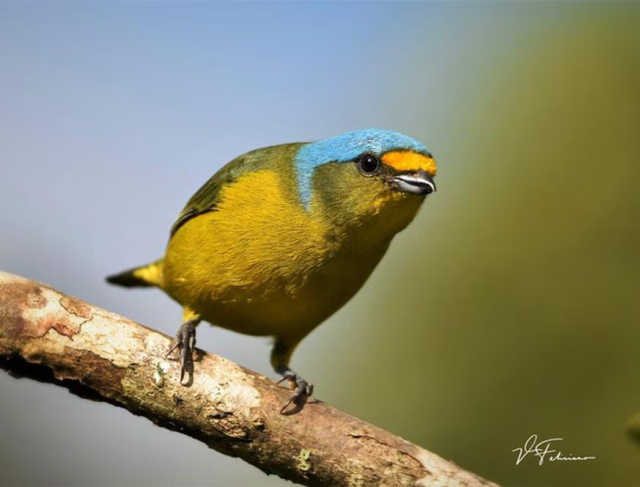Puerto Rican goldfinch receives endemic bird designation
Submitted on 7 August 2023 - 10:14am
This article is reproduced by CienciaPR with permission from the original source.
CienciaPR Contribution:
Original Source:
By:

The species is distinguishable by its light blue head, bright yellow belly and rapid song.
If you hear the goldfinch's melodious song louder this week, it's probably because it's celebrating its designation as Puerto Rico's 19th endemic bird.
The American Ornithological Society made the designation last Tuesday, based on more than 10 studies done since 1889 on the bird. Their report divides what was previously recognized as one species, the West Indian goldfinch, into three: the Hispaniolan goldfinch, the Lesser Antillean goldfinch and the Puerto Rican goldfinch.
This division is more than just a name change. "The fact that we have a distinctive or unique species for Puerto Rico helps us continue the work of conserving our natural heritage," said Emilio Font, director of the Puerto Rican Ornithological Society, Inc. (SOPI).
"Currently, there is concern about the distribution and abundance of this species. Being endemic now helps to identify funds to have a clear estimate of the species' population size and distribution," he added in an interview with El Nuevo Día.
Although it is not known exactly how many goldfinches there are in Puerto Rico, they have been extensively documented, both by professional ornithologists and birdwatchers. They live high in the treetops of tropical forests, including the state forests of Maricao and Guánica, as well as El Yunque (national), among others. They feed on the red and white fruits of mistletoe (a semi-parasitic plant that absorbs water from the trees it invades). They are recognizable by their light blue head, their bright yellow belly and their rapid singing that mixes whistles and tinkling chirps.
It was precisely their distinctive colors that led to the division of the species into three. The Louisiana State University researchers who officially proposed the division in 2023 noted that the Puerto Rican goldfinch has a yellow belly, while the Hispaniolan goldfinch has a more orange belly and the Lesser Antillean goldfinch has a green belly. They also noted that the Puerto Rican Goldfinch has a shorter tail than the other two species.
The scientific name of the species is Chlorophonia sclateri. Chlorophonia combines the Greek word khlōros, meaning green, with the genus name euphonia, meaning sweet sound in Greek. Sclateri refers to the British zoologist who first observed it, Philip Sclater.
In totality, its name refers to the "sweet and subtle" song of the goldfinch, which has been influential in Puerto Rican culture and music.
"The goldfinch is part of our folklore," Font said. "It is a melodious song...our jíbaros in their music attribute that melody to wisdom and divine love."
The goldfinch is the second bird to be recognized as endemic to Puerto Rico in less than a year, following the Puerto Rican golden buzzard, which received the designation in August 2022. Both are classified as "Least Concern" on the International Union for Conservation of Nature's Red List.
Still, Font warned that deforestation and forest fragmentation threaten their habitat. "The goldfinch, unlike the golden hummingbird, is a woodland bird. It does not tolerate the impact of human activity," he explained.
Finally, she stressed the importance of projects such as the campaign of the non-profit organization Para La Naturaleza aimed at protecting 33% of the land of high ecological value to conserve biodiversity and ensure that endemic species do not disappear.
The author studies biology and is a fellow of the American Association for the Advancement of Science at El Nuevo Día.







